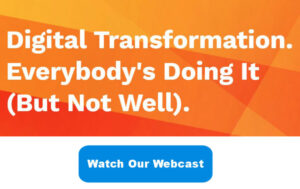Predicting the Future of ITSM — How Did We Do? Part 5: The Customer
In 2015, we published five predictions of how IT would change by 2020. Here’s a look at the last of those predictions, and our take on where we are today.
Back in 2015, we published five predictions of how IT would change by 2020. So, how did we do? Let’s take a look.
Over the course of this week, we’ve published one prediction and result per day. Monday’s post was Part 1: The Work. We followed that with Part 2: The Tech, Part 3: The Role of Support, and then yesterday, Part 4: The Role of IT.
In our original post, How IT Will Change by 2020 – Research from HDI, we elaborated on five topics of forecasting presented in Foresight Is 2020: Industry Predictions from the HDI Strategic Advisory Board, written by Roy Atkinson and Craig Baxter.
Here’s a look back at the last of the predictions made in that post five years ago, and our take on where we are actually at today.
The Customer
2015 prediction: Organizations will focus increased efforts and spending on improving the customer experience, with particular emphasis on the internal customer (primarily employees, but also contractors, suppliers, and partners).
2020 reality: People generally, and Millennials and Gen Zers particularly, prefer self-service over having to talk to someone. Businesses want to reduce costs wherever they can. These two trends have merged in the effort to optimize the online customer experience.
While these trends have been in place for some time now, the pandemic has accelerated the shift. With the hesitance to eat out or shop at brick-and-mortar stores, people who were already shopping online have moved more of their purchasing there, while those who did little online buying previously have now embraced it.
In the professional realm, as workers were sent home from offices last spring, everything moved online. Not just support requests but meetings and even casual conversations with colleagues went virtual.

Enterprises had to scramble to equip employees for full-time remote work, understanding that the easier they made things, the more quickly employees would embrace and master these tools, and the smaller and shorter the negative impact on productivity would be.
The pandemic and its impacts have accelerated digital transformation initiatives already in place. Business leaders realize that the better the experience provided in their self-service portal, the more employees will want to use it.
The more they use it, the more internal business process experts and owners will want to create services for it. Low-code development tools enable business process owners to build those solutions with little or no help from IT. The company gets quick wins. Incremental improvements save money while reducing digital transformation risks.
Improving the end-user experience not only saves money, but helps companies attract and retain the best employees, by creating a better work environment. It’s not just free lunches on Fridays, but eliminating red tape, bureaucracy, paperwork, and obstacles to people doing their jobs.
The best service portal tools not only optimize the experience for users, but also for the service owners who create new solutions and the IT staff that support it.
Conclusion: Nailed it.
The Wrap Up
Summing it all up, only one of these predictions—bringing enterprise-wide services together in a single, unified portal—remains more of an aspiration and a vision than a reality today.
The predictions made in 2015 for how IoT technology and the role of IT would change by 2020 were mostly on target, though both took some unexpected turns. IT support has certainly become more personalized, if not as proactive as predicted.
And finally, predictions about the focus on customer service were spot on, actually accelerated by the (completely unforeseen) pandemic.
How do you think we, and HDI, did with these predictions? Leave your thoughts in the contact form at the top of this page or reach out on Twitter if you’ve got feedback for us.
NOTE: These posts would not have been possible without the expert input of Kinetic Data’s director of customer services, Matt Howe.



